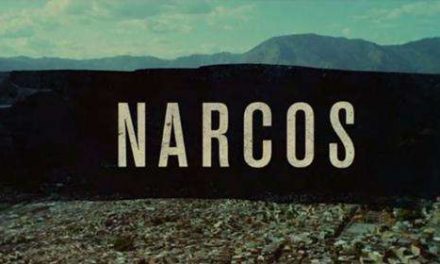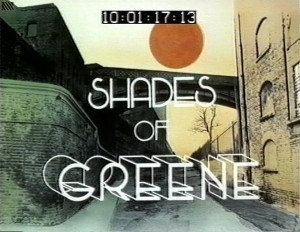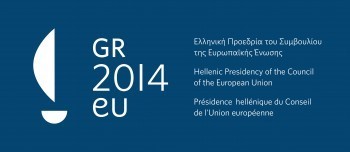One of the most common questions I get asked when I am at a conference abroad is what television is like in my own country. As a researcher mainly interested in British and American television, people ask me if Spanish TV is of the same quality as English-speaking productions. Generally, nobody in these contexts knows anything about television in Spain, except for some clichés or some confused information picked up on the last holiday trip to Mallorca. And I completely understand why. To a certain extent, it is perfectly plausible that I might be more focused on foreign productions because national ones do not have the same quality in terms of narrative or aesthetics. And this hypothesis crosses my mind recurrently, as I know it also happens to some colleagues from other non-English speaking countries. But why do countries smaller than Spain, such as Denmark, for instance, get a chance to contribute to the international industry? Is it just a matter of talent? And, if it is a matter of talent, why does talent never travel to the South?!
The interest in and the excellence of Danish series like The Killing (DR1, 2007-2012), Borgen (DR1, since 2010), The Bridge (SVT1, DR1, since 2011) or Those Who Kill (TV2, 2011) is not part of this question, nor is the quality of some other productions from the UK and the USA in this so-called Third Golden Age of Television. So this is not about fashions or tendencies. Or, at least, fashion and tendencies cannot be the only reasons to justify why these series are internationally well-known. Instead, we cannot rule out globalising tendencies connected to dynamics of cultural exchange and what French sociologist Pierre Bourdieu called dominant cultures: it is evident that the flows between the Scandinavian countries and the United Kingdom within the cultural industries, for instance, are more pervasive than the links between other places. On the other hand, the dominance of English-speaking audiovisual products, even in countries where films and series are always dubbed, like in Spain, has brought with it a heterogeneous string of productions that are sometimes of questionable quality. Among the multitude of English and American films and series that flood the screens of Spanish television, there are some that leave a lot to be desired. In this context it is easy to claim that some Spanish productions are better in terms of quality.
Economic and investment reasons aside, the lack of audiovisual exports from Spain is a sort of ‘X file’ for the national industry. In the last years, Spanish television fictions have been following two diametrically opposed paths: the preservation of a typical Spanish way of constructing narratives and the emulation of, basically, American stories but as lower-cost versions. “Spain is different” was a slogan to promote this country in the 1960s and, actually, hide a key truth: despite this dominance of English-speaking culture, Spain had protected its own heritage with zeal. There is a reason, then, why the word castizo, to express the purity of cultural values, is widely used in the Spanish language… and sometimes with pride.
Spanish television has tried to preserve these typically castizas productions, diving into its literary heritage: genres like the baroque comedy, the picaresque or the farce are still present in television fictions, but with unequal results. Of course, genuine sitcoms like Siete Vidas (Telecinco, 1999-2006) and its spin-off Aída (Telecinco, since 2005),
or La que se avecina (Telecinco, since 2007) pick up the spirit of this tendency, using some references to traditional characters and situations.

On the other hand, Spanish fictions have tried to grow up, as I mentioned, through mimesis, taking some ideas from foreign productions. Large amounts have been invested in historical dramas. In the last few years, they have proliferated with a paradoxical intention: to emphasise Spanish history and to construct a sort of American plot. If the sitcoms quoted above are strictly authentic, here we deal with typical American production values. Hispania is one of them, a kind of Rome (BBC-HBO-RAI, 2005-2007) based on the conquest of the Iberian Peninsula by the Roman Empire. The experience is that of an action drama, with some historical and cultural elements. The result is closer to a foreign production because the historical context is just an excuse to tell a quintessential Hollywood story.
In the same line of Hispania, la leyenda (Antena 3, 2010-2012) we can find Toledo, fate’s crossroads(my translation) (Antena 3, 2012). The plot focuses on the siege of the city of Toledo by Muslims during the 13th Century and the reign of the mythic Alfonso X, the Wise.
Again, the cultural and historical background remain just that as the story focuses on battles and action rather than providing a reflection on those times. Viewers, probably, prefer this option as audience numbers for those two series and other similar productions, like Isabel (TVE, since 2012), about Isabel I the Catholic Queen, suggest. The interesting point about that is how Spanish television changed in order to be on a par with English-speaking productions trends, or maybe to please spectators – or probably both! After Franco’s Dictatorship, during the so-called Transition, Spanish television made a huge effort to recover its historical and literary heritage to create a univocal imaginary. A lot of classical oeuvres were staged – Don Quixote included – with the objective of disseminating Spanish culture.

Current Spanish television seems to forget this aim in favour of the globalization and standardization of productions. And, in this context, we encounter some strange experiences, like El Barco –The Ship–(Antena 3, 2011-2013) , a Lost style series about the adventures of a crew on board of an enchanted ship; El internado –Boarding School– (Antena 3, 2007-2010), based on a mysterious school halfway to science-fiction; or the king of pastiche, Águila Roja –Red Eagle- (TVE, since 2009), a kind of ninjaversion of Robin Hood in the middle of the Spanish Golden Century. Yes, you read right!

Above and beyond these American-Spanish imitations – which do present us with high production values – some programmes really deserve to be mentioned for you to watch with subtitles (at this point, I don’t think they can be sold internationally): Polseres Vermelles – Red Straps (TV3, since 2011), a series created by the prolific Catalan television station in Catalan that is waiting for a Stephen Spielberg adaptation; Crematorio – Crematorium (Canal +, 2011), about the corruption on the Spanish Mediterranian Coast; or ¿Qué fue de Jorge Sanz? –What happened to Jorge Sanz? (Canal +, 2010) a hilarious production by Canal + Spain based on the experiences of real-life actor Jorge Sanz.

There are still lots of fictions to illustrate just how many productions there are and, consequently, how big a failure it is to export them. Such a failure constitutes an industrial disaster that for now remains impossible to explain.
Dr. Manel Jiménez-Morales is a lecturer on Film and Television at Universitat Pompeu Fabra, Barcelona. He is also the director of the Masters in Script Writing for Entertainment and Comedy Programmes, organised by El Terrat, one of the biggest production companies in Spain, and has worked as a scriptwriter, producer and director for radio and television. In the area of research development, Manel Jiménez-Morales contributes regularly to several funded projects and international publications.





